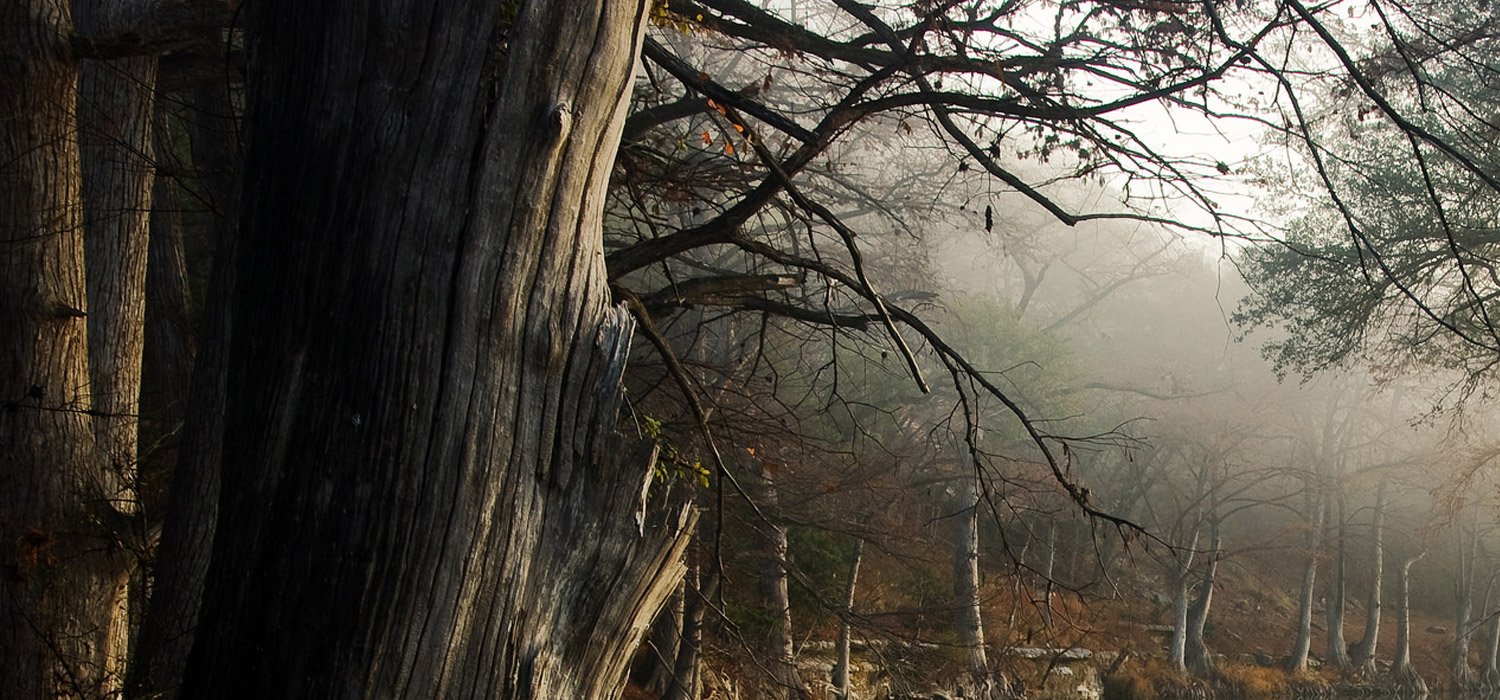Erosion and Runoff
Soil erosion via water flow is a significant issue in Hays County and in all of the Texas Hill Country. Our geology with the limestone base and relatively thin soil makes it difficult for rain to soak in quickly. The soils are saturated in a short time, with rainfall running off and washing the soil it its path. In addition, the normal precipitation pattern is a series of rain showers and thunderstorms which often produce an impressive amount of rain in a relatively short period. What can be done to mitigate this issue?
During or immediately after a rain event, observe your property to identify areas with problematic drainage. Grass that is laid over in a single direction, ripple patterns of plant debris and even small furrows created by water are all hints. There are two main types of flow: sheet flow and channel flow. Sheet flow is when water, usually storm runoff, flows in a thin layer over the ground surface. Channel flow occurs within channels, streams, ditches, and piped storm drainage. After identifying your runoff characteristics and paths, you have several options to address your erosion situation. Because it takes around 500 years to build an inch of topsoil, every bit of it that can be retained is important.
There are several methods to control sheet flow, but the objective of each one is to slow the velocity of the water and encourage absorption. In an urban setting, swales are often used both to capture water and to redirect it. A swale is a shallow depression or ditch excavated perpendicular to or angled slightly away from the sheet drainage flow. The excavated earth is used to make a berm on the downhill side. Swales are usually constructed to be wider than deeper. Planted with grass to hold the soil, they are easy to maintain and can often be mowed along with the rest of the yard. They direct water laterally rather than vertically across the slope.
Berms are swales without the depression. They are used to slow down and to divert water along contour lines. The classic version is built of soil piled and compacted along a contour. There are also types of berms which are used to add interest to an urban landscape, serving a dual purpose. In the more rural setting in Hays County, there is a greater variety of readily available materials to use to make effective berms. Stone berms built entirely of various sizes of the local rock work well as a way to slow, redirect, and filter the water. The branches of the Ashe juniper that are cut when practicing brush management techniques can be piled in mounds along contour lines. Over time, these mounds will settle and work quite well. If the brush has been chipped, the mulch can also be used to direct flow. These materials are part of the environment, and using them to build berms helps deal with the problem of what to do with what you have cut, or moved, on your property. It is always rewarding to observe the dirt that begins to build up behind these berm structures where they have been effectively placed.
Rain gardens are another method that is especially useful for capturing water flowing off roofs, driveways, and other impermeable surfaces. Rain gardens are shallow, vegetated depressions designed to hold, absorb and filter runoff. These are designed to hold the water for several days, before it eventually is absorbed into the soil or evaporates. Planted with native grasses, perennial plants and shrubs, these can be both erosion preventers and attractive additions to the landscape.
On relatively bare slopes, there are effective ways to begin to slow down the water. On slopes of less than 33%, revegetation is recommended. Creating riprap, the use of medium to large rocks to cover a surface and control erosion, enhances success. Not only do these rocks slow water to prevent erosion, they also provide protection for native grass seeds to sprout and grow. These grasses and other small native plants grow as mediators, as well. The root systems hold the soil and the blades slow and filter the water to aid in absorption. On slopes more than 33%, more aggressive methods may be necessary. The use of stone or wood retaining walls, riprap, interlocking concrete blocks, erosion mats and terracing might be required. In these areas, grasses should be supplemented with native trees and shrubs. Occasional watering will probably be required for the first two years to get the plantings established.
Dealing with channel flow is a more complicated situation that may require the professional advice of an engineer. Be aware that channel flow is considered surface water and falls under Texas water laws.
Consider slowing that water down to stop erosion of our precious topsoil, and take action to be a better steward of our wonderful Hays County land.
Links & Resources
Inexpensive Ways to Control Erosion

